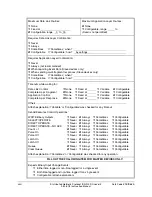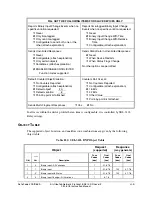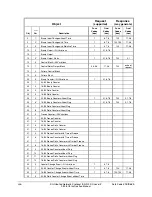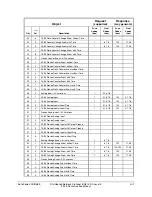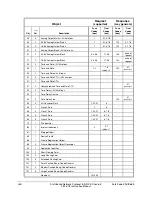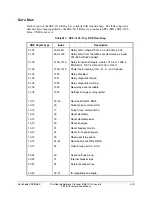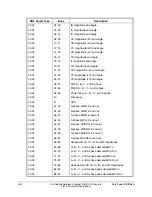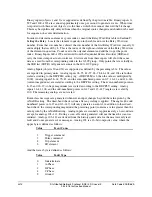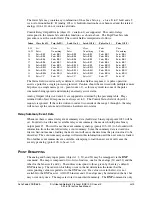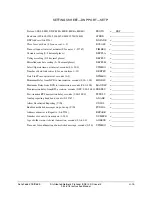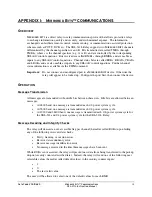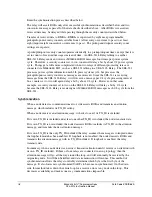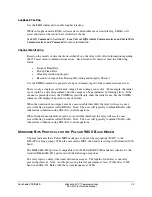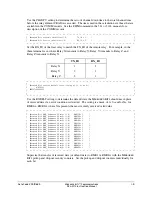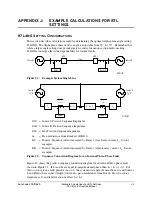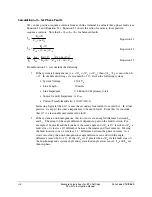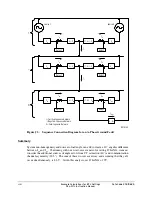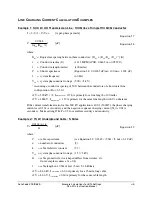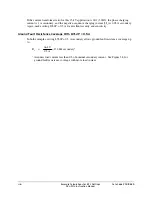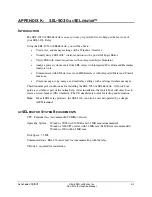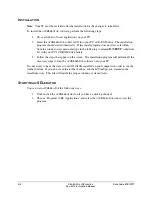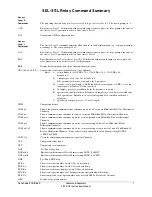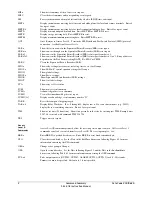
I-2
M
IRRORED
B
ITS
™ Communications
Date Code 20010625
SEL-311L Instruction Manual
Enter the synchronization process described below.
The relay will assert ROK
x
only after successful synchronization as described below and two
consecutive messages pass all of the data checks described above. After ROK
x
is reasserted,
received data may be delayed while passing through the security counters described below.
Transfer of received data to RMB1
x
–
RMB8
x
is supervised by eight user-programmable
pickup/dropout security counters settable from 1 (allow every occurrence to pass) to at least
eight (require eight consecutive occurrences to pass). The pickup and dropout security count
settings are separate.
A pickup/dropout security counter operates identically to a pickup/dropout timer, except that it is
set in counts of received messages instead of time. An SEL-311L Relay talking to another
SEL-311L Relay sends and receives M
IRRORED
B
ITS
messages four times per power system
cycle. Therefore, a security counter set to two counts will delay a bit by about 1/2 power system
cycle. Things get a little more complicated when two relays of different processing rates are
connected via M
IRRORED
B
ITS
, such as a SEL-321 talking to a SEL-311L Relay. The SEL-321
processes power system information each 1/8 power system cycle, but processes the
pickup/dropout security counters as messages are received. Since the SEL-321 is receiving
messages from the SEL-311L Relay, it will receive a message per 1/4 cycle processing interval.
So a counter set to two will again delay a bit by about 1/2 cycle. However, in that same
example, a security counter set to two on the SEL-311L Relay will delay a bit by 1/4 cycle,
because the SEL-311L Relay is receiving new M
IRRORED
B
ITS
messages each 1/8 cycle from the
SEL-321.
Synchronization
When a node detects a communications error, it deasserts ROK
x
and transmits an attention
message, which includes its TX_ID setting.
When a node receives an attention message, it checks to see if its TX_ID is included.
If its own TX_ID is included and at least one other TX_ID is included, the node transmits data.
If its own TX_ID is not included, the node deasserts ROK
x
, includes its TX_ID in the attention
message, and transmits the new attention message.
If its own TX_ID is the only TX_ID included, the relay assumes the message is corrupted unless
the loopback mode has been enabled. If loopback is not enabled, the node deasserts ROK
x
and
transmits the attention message with its TX_ID included. If loopback is enabled, the relay
transmits data.
In summary, when a node detects an error, it transmits attention until it receives an attention with
its own TX_ID included. If three or four relays are connected in a ring topology, then the
attention message will go all the way around the loop, and will eventually be received by the
originating node. It will then be killed, and data transmission will resume. This method of
synchronization allows the relays to reliably determine which byte is the first byte of the
message. It also forces mis-synchronized UARTs to become re-synchronized. On the down
side, this method takes down the entire loop for a receive error at any node in the loop. This
decreases availability and makes one-way communications impossible.
Summary of Contents for SEL-311L
Page 6: ......
Page 8: ......
Page 26: ......
Page 54: ......
Page 144: ......
Page 216: ......
Page 252: ......
Page 302: ......
Page 338: ......
Page 480: ......
Page 484: ......
Page 486: ......
Page 502: ......
Page 532: ...12 28 Standard Event Reports and SER Date Code 20010625 SEL 311L Instruction Manual 4 ...
Page 552: ......
Page 554: ......
Page 574: ......
Page 576: ......
Page 596: ......
Page 602: ......
Page 628: ......
Page 656: ......
Page 662: ......
Page 664: ......
Page 688: ......
Page 700: ......
Page 716: ......
Page 722: ......
Page 734: ......

